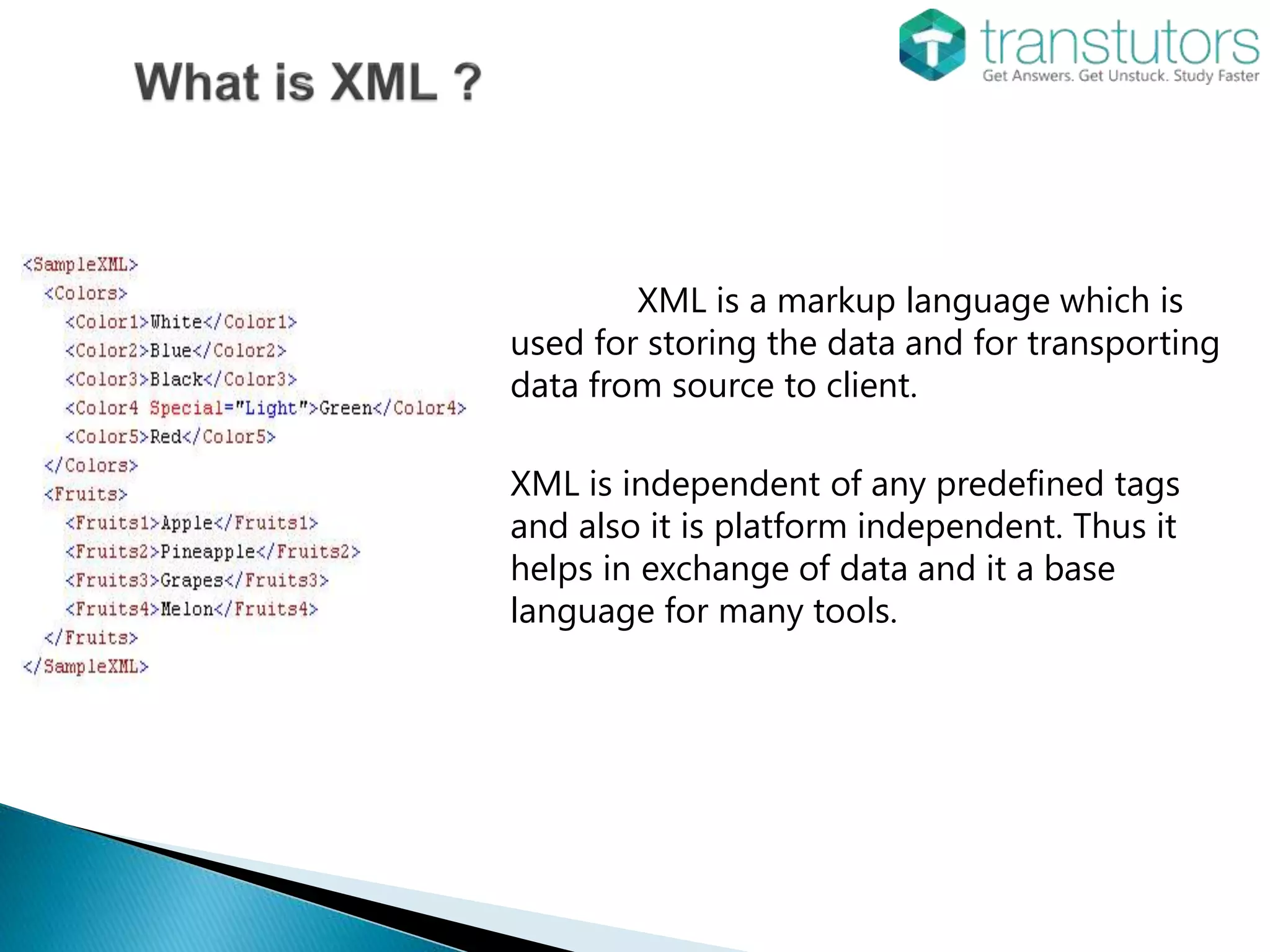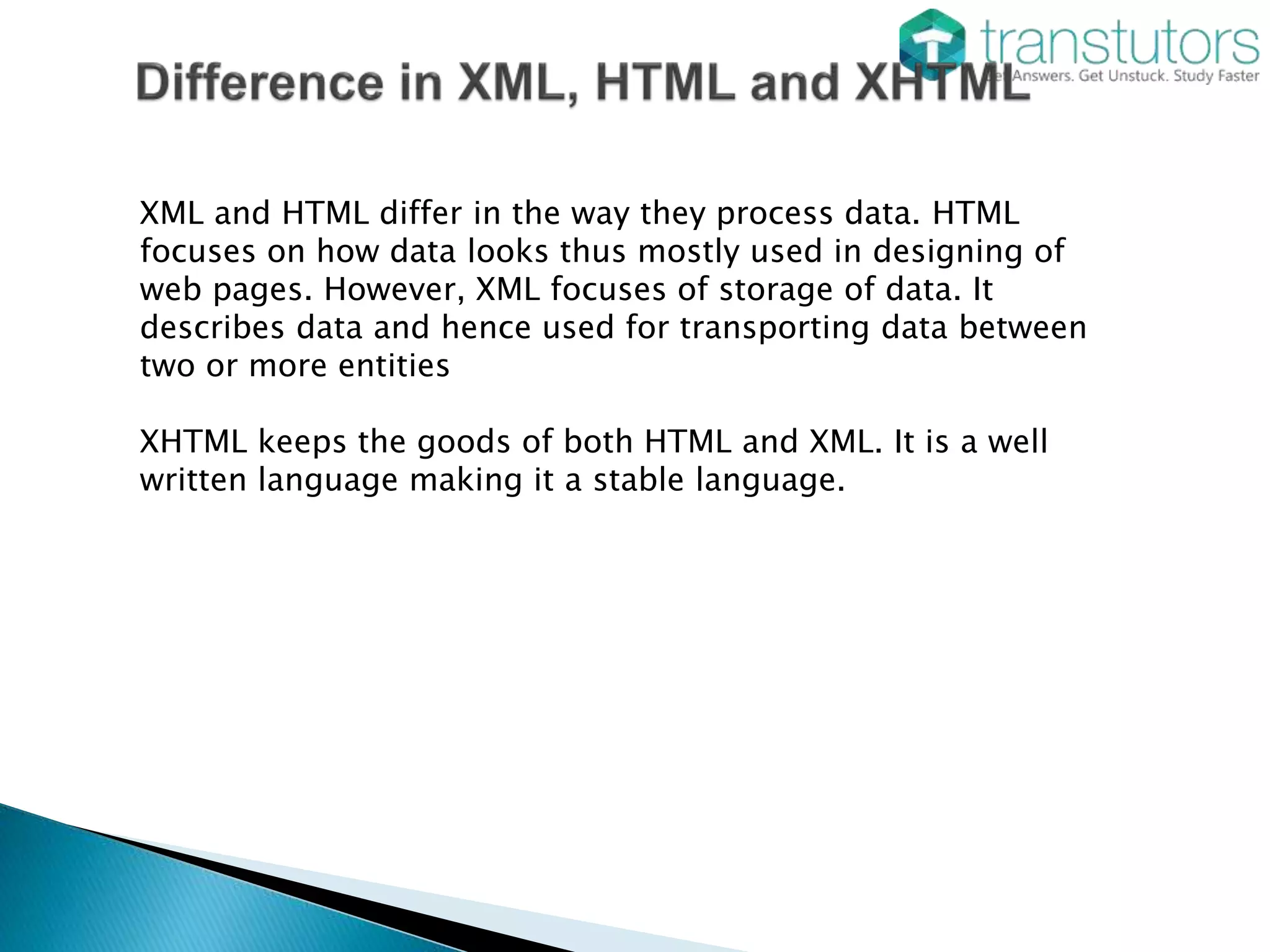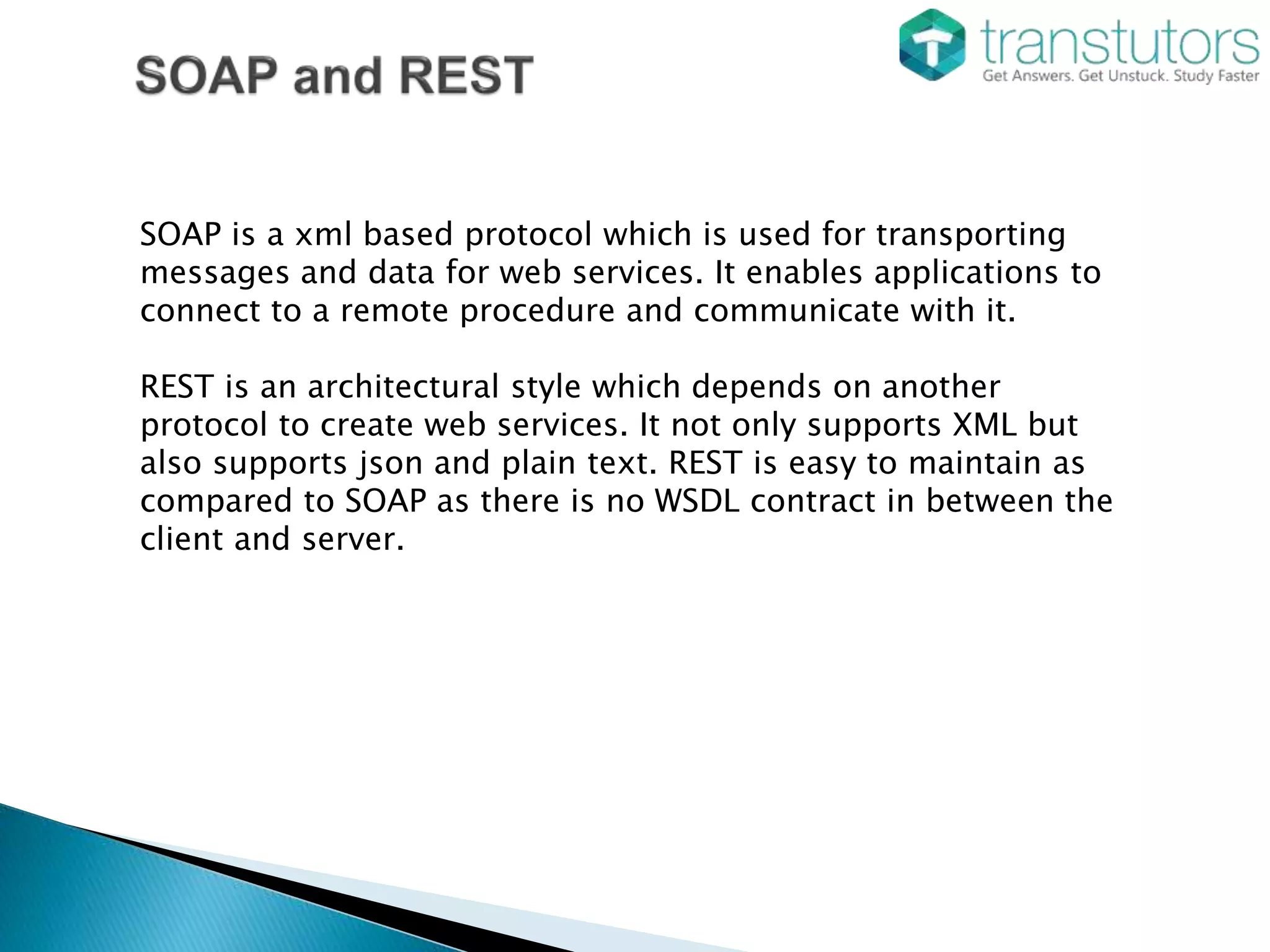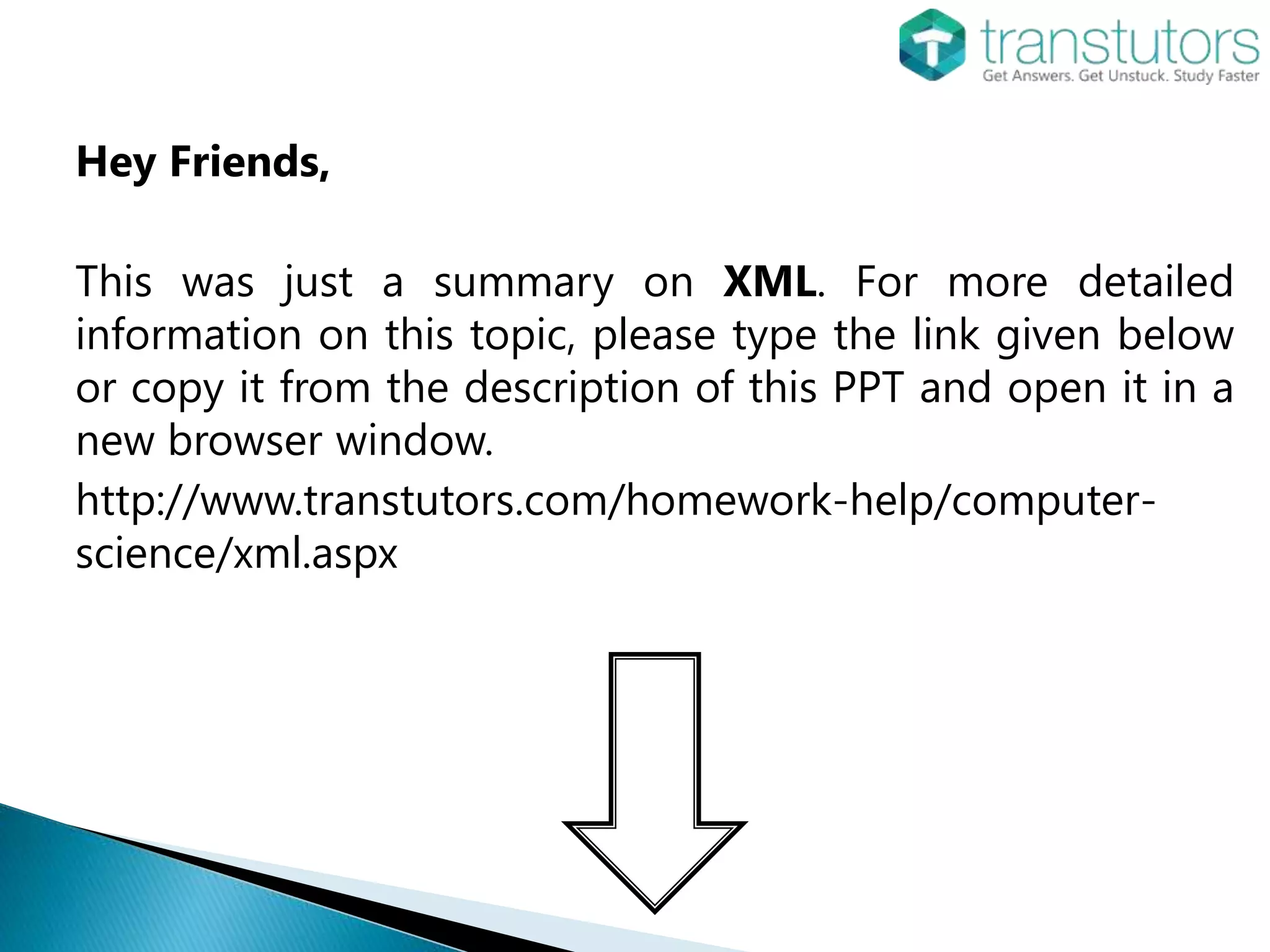XML is a markup language used for storing and transporting data from source to client. It uses user-defined tags and is platform independent. Tools like XML editors, validators, and parsers are used to work with XML documents. XML focuses on describing data, while HTML focuses on displaying data, making XML well-suited for transporting data between systems. XHTML combines aspects of HTML and XML to create a stable markup language. SOAP uses XML to transport messages and data for web services, while REST can use XML, JSON, or plain text and is easier to maintain than SOAP.






